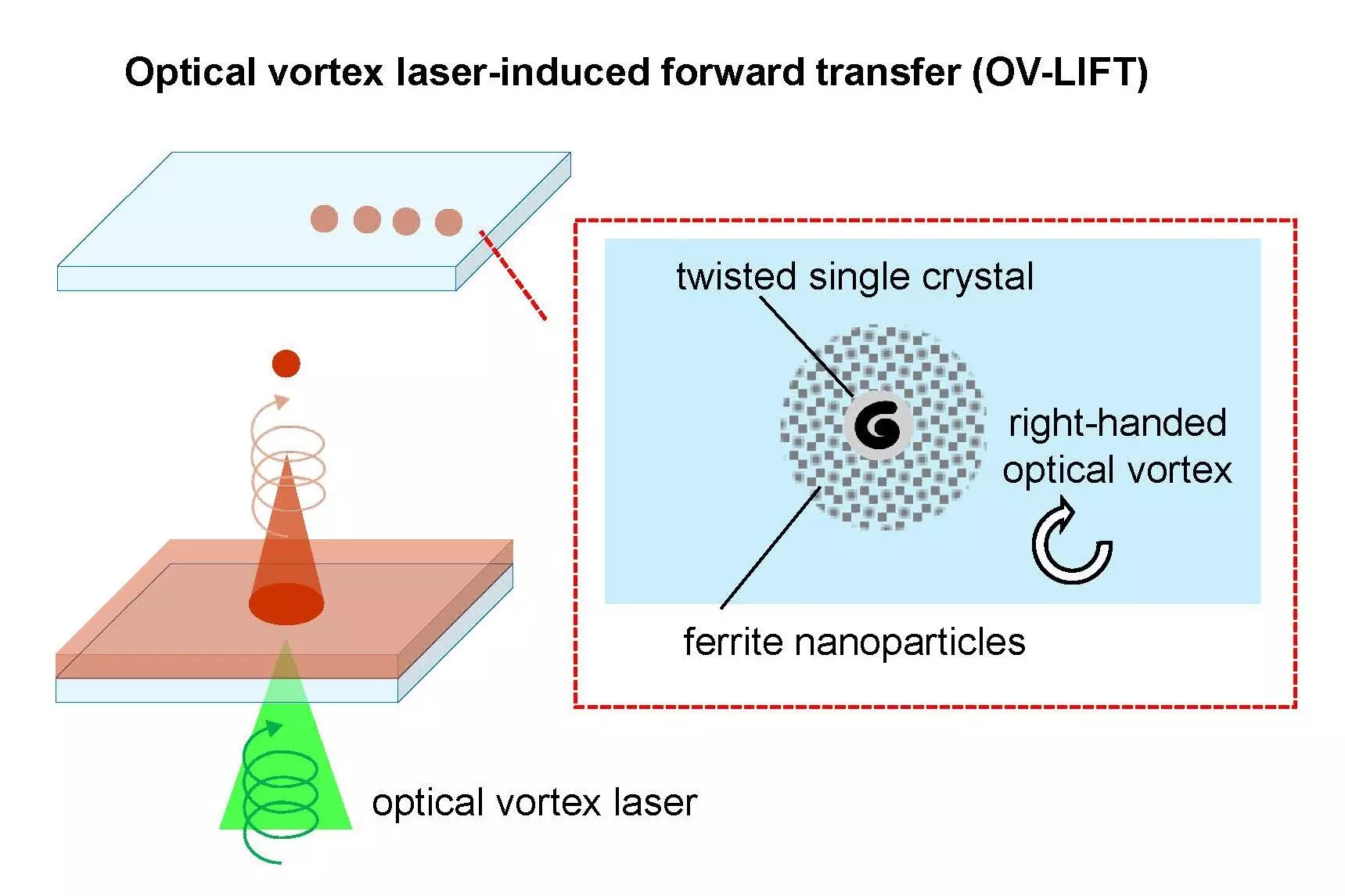Printing technology has often been overshadowed by the rapid advancement of digital technology in recent years. However, a team led by Osaka Metropolitan University has demonstrated the continued relevance and potential of printing technology in the digital age. By utilizing a new printing technique known as laser-induced forward transfer (LIFT) with an optical vortex, the team has made significant progress in the development of printable magnetic devices for high-density data storage.
The OV-LIFT Technique
Dr. Ken-ichi Yuyama, along with his colleagues at the Graduate School of Science, have introduced the OV-LIFT technique that harnesses the power of an optical vortex for laser printing. By shining a laser beam through a spatial light modulator and quarter-wave plate to create a circularly polarized optical vortex, the team was able to precisely focus the beam onto a plate containing magnetic ferrite nanoparticles. The outcome was the successful printing of magnetic crystals on a surface with remarkable precision.
One of the key findings of the research is the unique helix-like twisted structures of the printed crystals. By manipulating the helicity of the optical vortex, the team was able to control the direction of these twisted structures, offering new possibilities for material design and synthesis. This breakthrough not only opens up opportunities for fine particle patterning but also for the creation of single crystals that could pave the way for the development of novel materials.
Dr. Yuyama highlighted the far-reaching implications of the research, emphasizing the potential for the technology to be applied beyond data storage. The ability to precisely control the printing of magnetic crystals opens up possibilities for a wide range of applications, including advanced material synthesis and the development of new materials. This innovative approach to printing technology could revolutionize the way we create and manipulate materials, leading to advancements in various fields.
The research conducted by the Osaka Metropolitan University team showcases the promising future of printing technology in the digital era. By pushing the boundaries of traditional printing techniques and incorporating optical vortex technology, the team has demonstrated the potential for creating printable magnetic devices that could revolutionize high-density data storage and material synthesis. This groundbreaking work serves as a testament to the ongoing relevance and innovation within the field of printing technology.


Leave a Reply